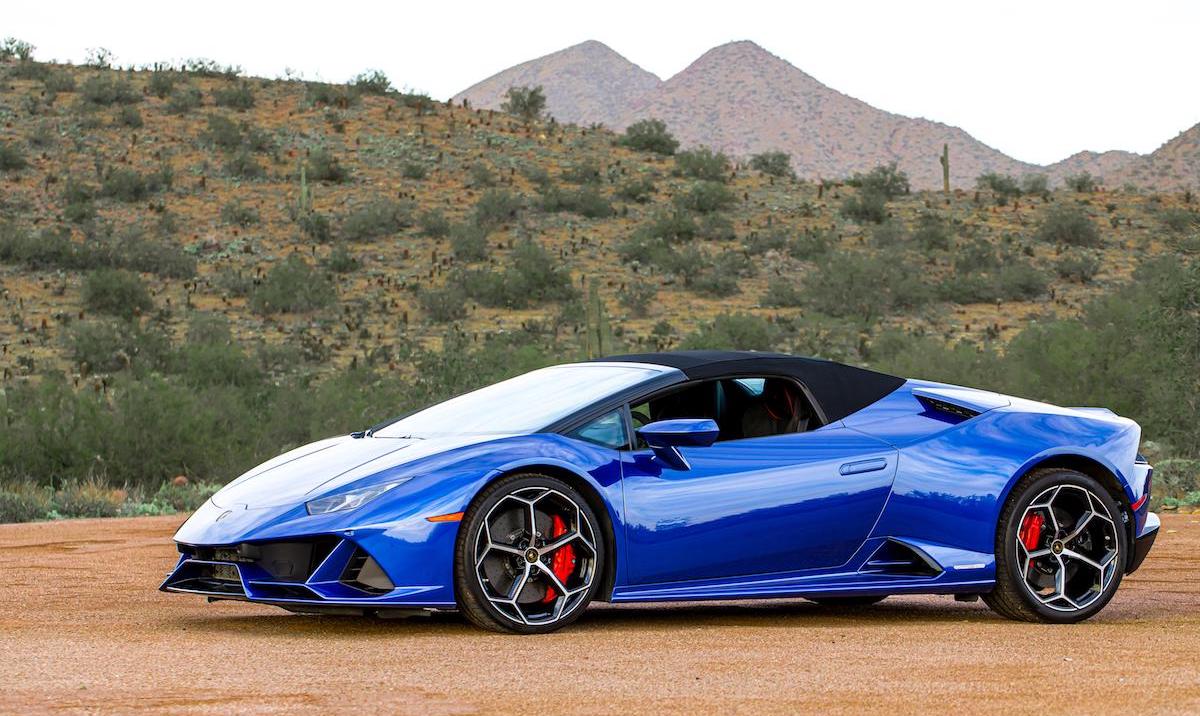
A lot of miles stretch from Lamborghini’s earliest beginnings in Sant’Agata Bolognese, Italy, to the truly extraordinary 2020 Huracán EVO Spyder. With the 1964 debut of his instant masterpiece, the 350 GTV, entrepreneurial brand founder Ferrucio Lamborghini launched the nascent namesake auto maker on a revolutionary trajectory that has led to its current position as one of the world’s elite manufacturers of super sports cars.
Contrary to what seems an obvious assumption, performance wasn’t the primary objective of the company’s earliest designs. Ferruccio Lamborghini initially gave little consideration to achieving record-shattering lap times or sports car manufacturing milestones. Instead, the Italian industrialist, previously best known for producing farm tractors, set out to create the world’s finest grand touring car. A few short years later, though, Lamborghini introduced the 1966 V12 Miura coupé, with a genre-defining format featuring the powerful mid-engine, rear-wheel drive configuration that remains a constant in many of today’s most popular sports car models.
The cutting-edge Countach, unveiled at the 1971 Geneva Motor Show before making its way onto showroom floors in 1974, was the next major milestone in Lamborghini’s mission to push the envelope and upend expectations. This revolutionary addition to the lineup featured an innovative new engine orientation in the form of the brand’s “LP” (“Longitudinale Posteriore”) designation. The Countach also introduced a new wedge-shaped body, cab-forward passenger compartment, and scissor door design that would ultimately help solidify Lamborghini’s success and play a pivotal role in popularizing many now-familiar design standards. The iconic model was a staple among sports car enthusiasts throughout the 70’s and 80’s, with millions of fans adorning their bedroom and garage walls with the coveted white Countach poster.
Not unlike many automobile manufacturers, Lamborghini endured a variety of challenges over the years and transferred ownership several times. These transitions would lead to the release of the Lamborghini Diablo and subsequent Murciélago, both featuring the popular V12 powertrain. Lamborghini’s first V10 model, the Gallardo, was also introduced and immediately garnered substantial interest from aspiring sports car fanatics as the brand’s new entry-level super sports car. The Gallardo quickly became the automaker’s best-selling model in the 2000’s before being replaced by the current V10 Huracán product line in 2014.
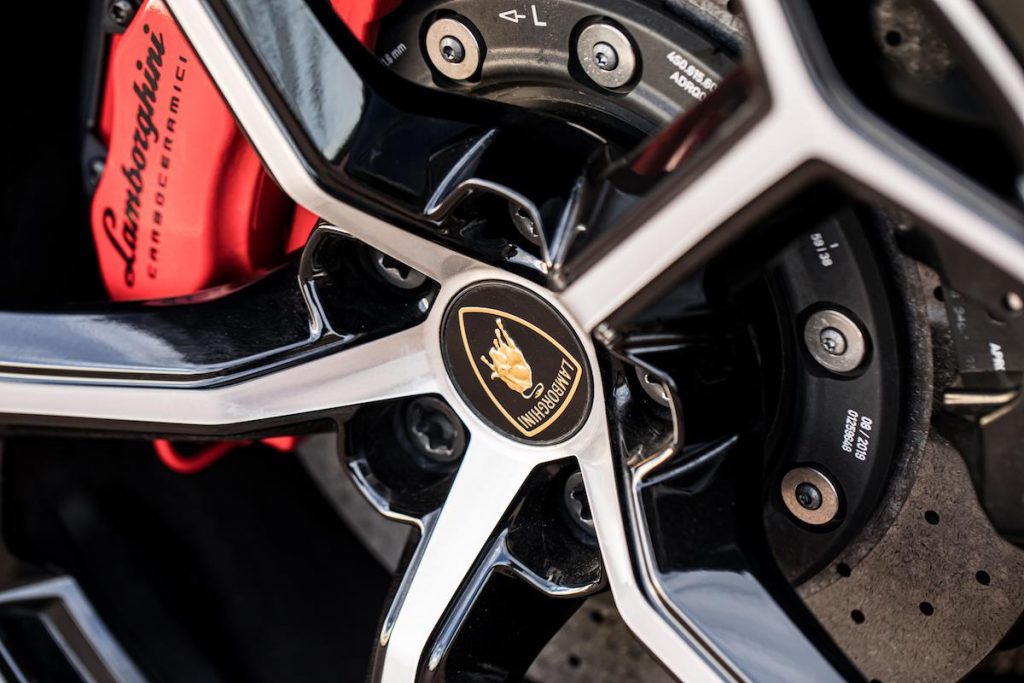
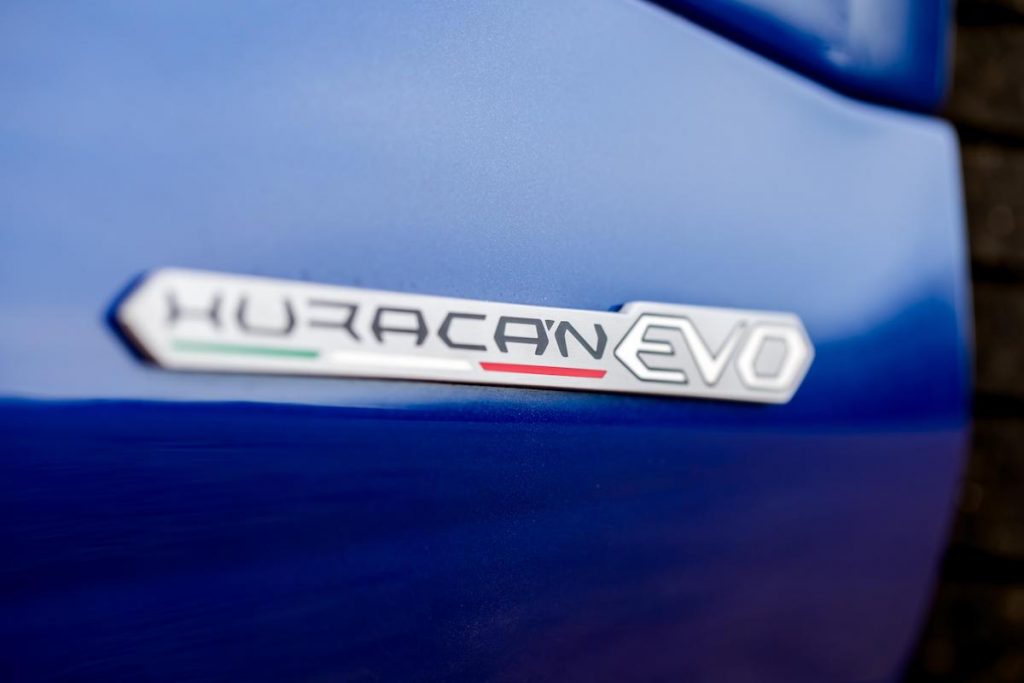
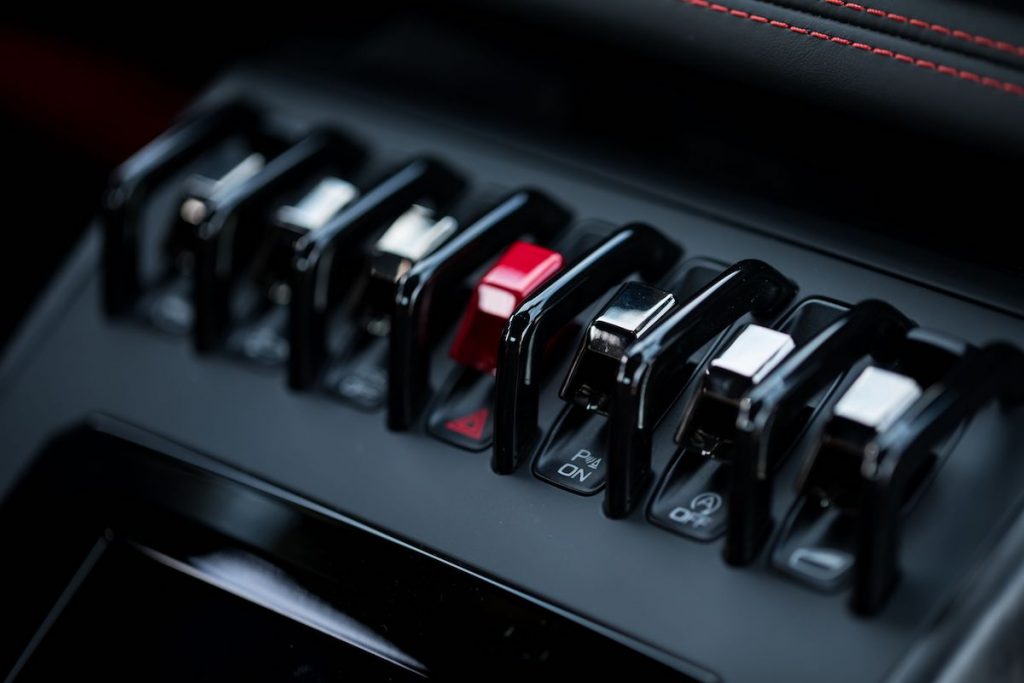
Fast-forward to today, where Lamborghini’s offerings continue to set new standards for the finest in luxury super sports cars. From its sleek design and undeniably sharp angles, to the unrivaled growl of its finely-tuned engines, a Lamborghini is simply unmistakable. Nothing turns heads on a busy city street or traffic-jammed highway quite like a Lambo, a rare vehicle with that certain je ne sais quoi that’s moved the needle on what it means to create a true “supercar.”
As a follow-up to the highly successful Huracán Performante model unveiled in 2017 (a vehicle that broke previous lap records in 2016 at the hallowed Nürburgring Nordschleife), a new and improved Huracán EVO was introduced to the market in 2019. The innovative EVO integrates lessons learned from the Performante, while incorporating a more powerful LP 640-4 engine and a plethora of new technological advancements and aerodynamic improvements.
Thanks to our friends at Lamborghini, I recently had an opportunity to take the new Huracán EVO for an extended test drive to experience the difference first hand. Having spent some time in 2016 at Palm Beach International Raceway with the original Huracán, I was curious as to how the new and improved model would compare. It wasn’t long before I had the answer.
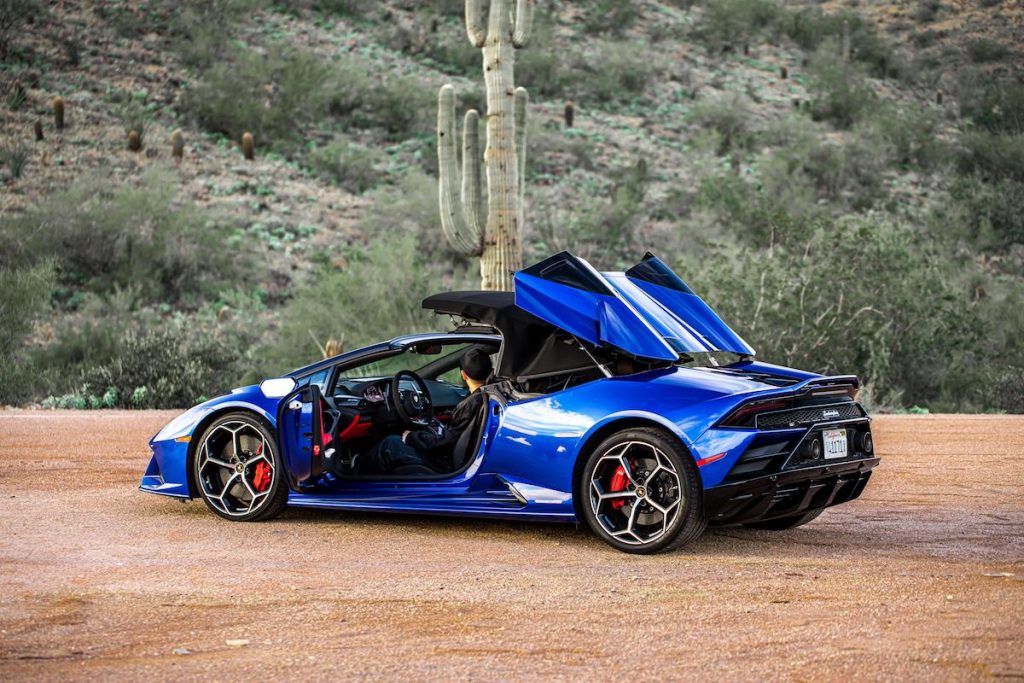
From the moment I took delivery of the new 2020 Huracán EVO Spyder, it was crystal clear that the changes were both bold and abundant. The new LP 640-4 engine inherited from the Performante offered obvious power upgrades, and the sound of the new center-mounted exhaust tips provided ample engine noise to satisfy my uncompromising demand for exhaust snaps, crackles, and pops. With the available 631hp and 442 lb-ft of torque to help thrust the EVO off the line, this new powertrain configuration was a significant improvement over the Huracán LP 580-2 I had previously tested on track a few years earlier at PBIR.
“The Huracán EVO Spyder incorporates all the performance, next-generation vehicle control and aerodynamic features of the EVO coupé, with its own unique personality and a driving excitement that only an open-top car can offer.” – Stefano Domenicali, Chairman and Chief Executive Officer of Automobili Lamborghini.
Toggling through the three available drive modes (Strada, Sport, and Corsa) offered noticeable differences in driving characteristics and performance. While Strada, or “Street,” delivered an already impressive driving experience, I found myself switching into Sport mode almost immediately following each start of the engine. Just the opening of the baffles was enough motivation to migrate from the somewhat tamed bull unleashed in the default Strada setting. Moving from Sport to Corsa only proved to further intensify the sportiness of the new EVO with a race-inspired digital dashboard display, tightened dampers, and a slightly stiffer steering setup.
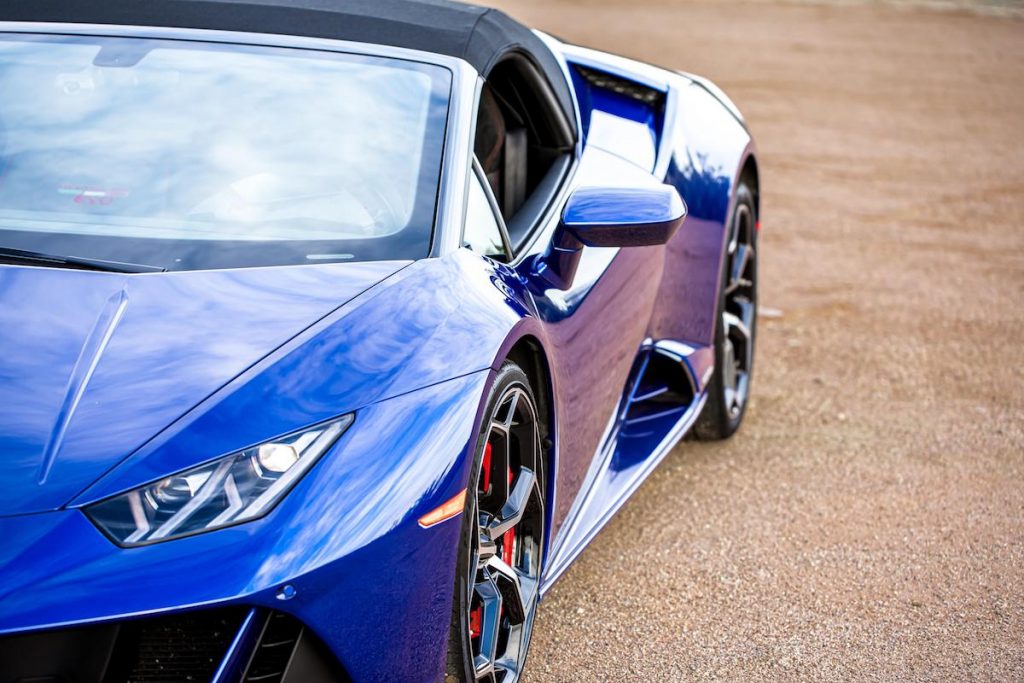
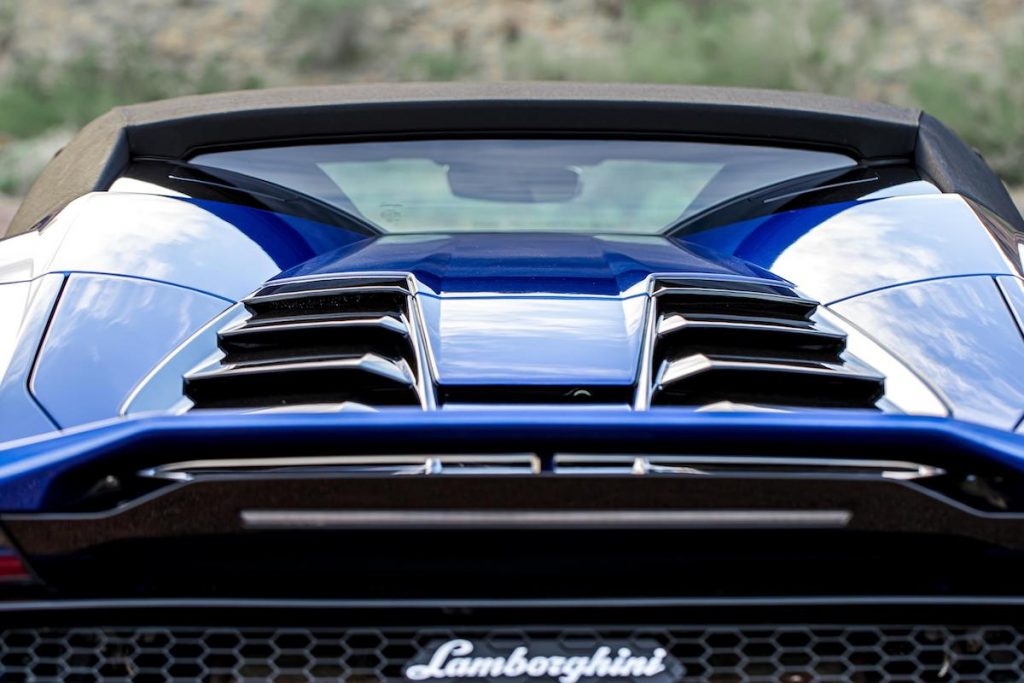
The EVO features compelling improvements in aerodynamics and handling with a new front bumper design, integrated rear spoiler, and — a personal favorite, all-wheel steering with brake-assisted torque vectoring. Coupled with the brand’s Lamborghini Dinamica Veicolo Integrata (LDVI) system and the EVO’s 7-speed dual-clutch transmission with manual paddle shifting option, the revised Huracán is capable of some very impressive performance numbers. LDVI is designed to predict throttle and steering inputs ahead of the driver’s response, delivering unprecedented performance from the vehicle’s 5.2L naturally aspirated V10 engine. Enhancing all that power under the deck lid, carbon ceramic brakes and bespoke 20” wheels with Pirelli P Zero tires have been added to help the EVO come to a quick stop when it’s time for a pit visit.
Even with all that adrenaline-pumping power being delivered by the perfectly tuned EVO performance elements, it’s perhaps the sheer outlandish selection of interior upgrades that’s most impressive in the revised V10 product line. An 8.4” touchscreen infotainment center takes the place of traditional controls for climate, interior lighting, audio, and the like. Meanwhile, the interior’s forged composite carbon creates a marbled appearance that cleverly complements the Alcantara fabric used throughout. One particularly handy feature (albeit not necessarily new to the EVO) is the handy toggle switch for the turn indicators. The option replaces a traditional lever and is so ingenious that it seems destined to become standard on all vehicles.
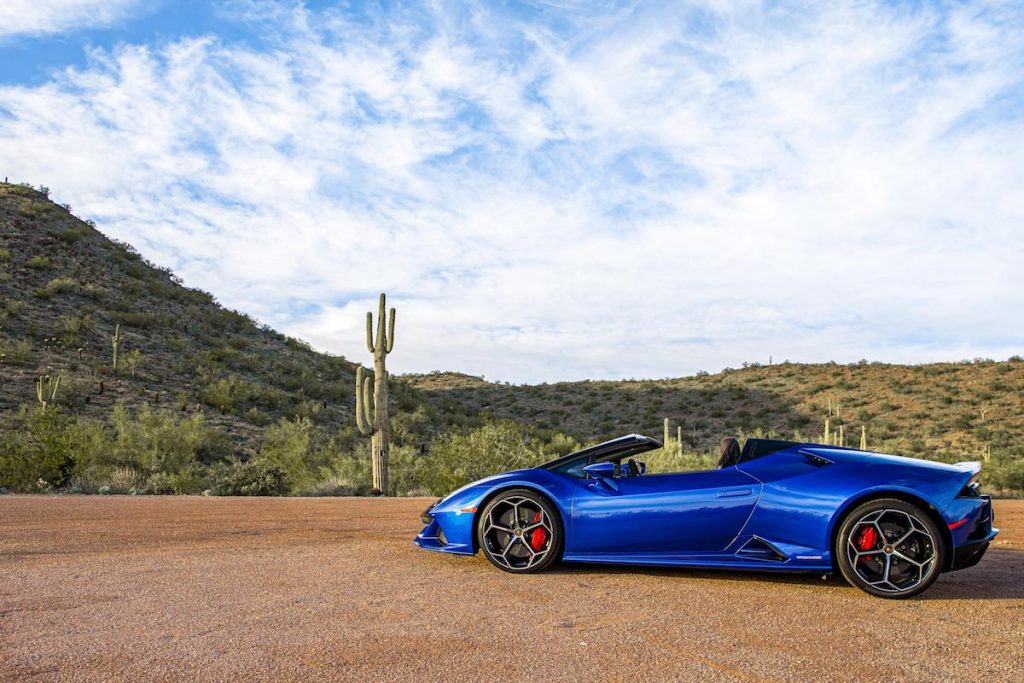
When it’s time to let your hair down and enjoy the surrounding landscape, the new 2020 Huracán EVO Spyder provides seamless up/down operation of the model’s open cockpit design, transforming the car to a gorgeous drop-top convertible in a mere 17 seconds, even at speeds of up to 31 mph. Like any other convertible model, the addition of a collapsible top means added weight to strengthen the vehicle’s overall rigidity, but I would happily choose the new 2020 Huracán EVO Spyder over its Coupé counterpart. The slight difference in performance is well worth the open-air experience and makes for an even more impressive-looking Lamborghini. It’s certainly convinced me to make the switch.
On behalf of Jetset Magazine, we’d like to say a special thank you to our friends from Automobili Lamborghini America, LLC., Tavits Photography, JN Media, JB’s Executive Detailing, and Divinity Event Lighting.

